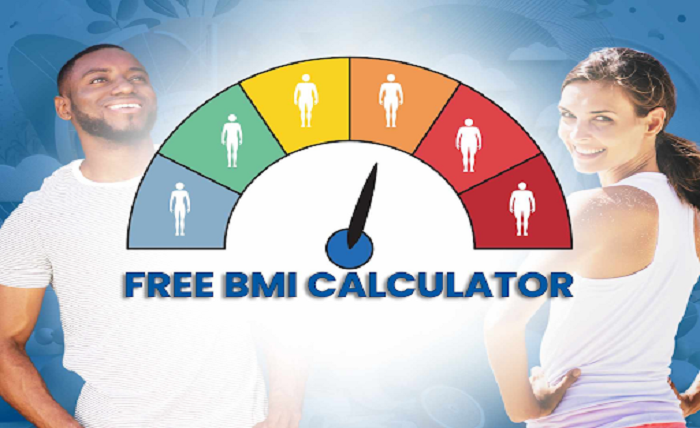Easy BMI Calculation at Home Using Only Your Height and Weight

Monitoring your health starts with understanding basic measurements. One of the simplest ways to assess whether you are within a healthy weight range is by using a BMI calculator. Body Mass Index (BMI) requires only your height and weight, making it one of the easiest health checks you can do at home. Alongside BMI, many people also use a BMR calculator to estimate daily energy needs, helping them balance food intake and physical activity.
What is BMI?
Body Mass Index is a simple number that indicates whether your weight is appropriate for your height. A BMI calculator helps assess if you fall under underweight, normal weight, overweight, or obesity categories, serving as a useful guideline even though it does not measure body fat directly.
The formula is straightforward:
BMI = Weight (kg) ÷ Height (m²)
For example, if you weigh 70 kilograms and are 1.75 metres tall, your BMI would be 70 ÷ (1.75 × 1.75) = 22.9. This falls into the normal range.
Why BMI matters
BMI is widely used because it quickly indicates whether someone may be at risk of health issues linked to being underweight or overweight.
- Underweight (BMI below 18.5): May indicate nutritional deficiencies or underlying health conditions.
- Normal weight (BMI 18.5–24.9): Generally considered healthy.
- Overweight (BMI 25–29.9): Linked to increased risk of conditions like diabetes and high blood pressure.
- Obese (BMI 30 or higher): Associated with higher risks of heart disease, stroke, and certain cancers.
While BMI is not perfect—it does not distinguish between muscle and fat—it remains a reliable screening tool for most people.
How to calculate BMI at home
The main advantage of BMI is that you can calculate it quickly without special equipment. Here’s how:
- Measure your height: Stand straight without shoes and use a measuring tape or wall chart. Record in metres.
- Measure your weight: Use a digital scale for accuracy and record in kilograms.
- Apply the formula: Divide your weight by your height squared.
You can also use a simple online BMI calculator, where you input your details and instantly receive your result.
Limitations of BMI
Although BMI is convenient, it has some limitations:
- Athletes or very muscular individuals may appear overweight even if they have low body fat.
- Older adults may have more body fat at the same BMI as younger people.
- It does not indicate fat distribution (belly fat is riskier than fat stored elsewhere).
This is why BMI should be considered alongside other health indicators like waist circumference, blood pressure, and lifestyle factors.
How BMR complements BMI
While BMI tells you whether your weight is appropriate for your height, Basal Metabolic Rate (BMR) tells you how many calories your body needs at rest to maintain basic functions like breathing, circulation, and temperature regulation.
A BMR calculator uses height, weight, age, and gender to estimate this number. For example, someone with a BMR of 1,500 calories burns that amount daily even without activity. Knowing your BMR helps when planning diets and exercise routines because it sets a baseline for calorie needs.
- If you consume fewer calories than your BMR plus activity level, you will likely lose weight.
- If you consume more, you may gain weight over time.
Together, BMI and BMR provide a clearer picture of your health—one tells you where you stand, and the other tells you how your body uses energy.
Practical steps for better results
- Track regularly: Check BMI and BMR every few months, especially if you are adjusting your lifestyle.
- Combine with fitness goals: Use BMI to track weight changes and BMR to plan calorie intake.
- Focus on trends: Small fluctuations are normal; long-term patterns matter more.
- Seek professional advice: If your BMI is outside the normal range, consult a healthcare provider for further evaluation.
Why home calculation matters
Being able to calculate BMI and BMR at home empowers individuals to take control of their health. It reduces reliance on hospital visits for basic checks and encourages proactive steps toward maintaining healthy weight and lifestyle habits.
With rising lifestyle-related conditions, knowing how to calculate and interpret BMI gives early warning signs that can lead to healthier choices. Similarly, understanding BMR supports smarter diet planning without resorting to guesswork.
Conclusion
Calculating your BMI at home requires nothing more than your height and weight, making it one of the easiest tools for tracking health. A simple BMI calculator quickly shows whether you are underweight, normal, overweight, or obese. To complement this, a BMR calculator helps you understand how many calories your body needs to function, guiding your nutrition and activity decisions. By using these two tools together, you can gain valuable insights into your health and take informed steps toward a balanced lifestyle.




